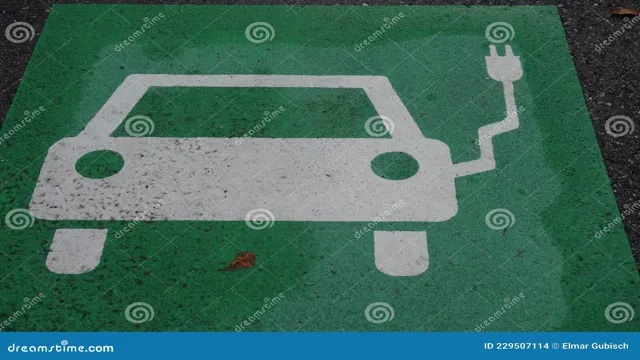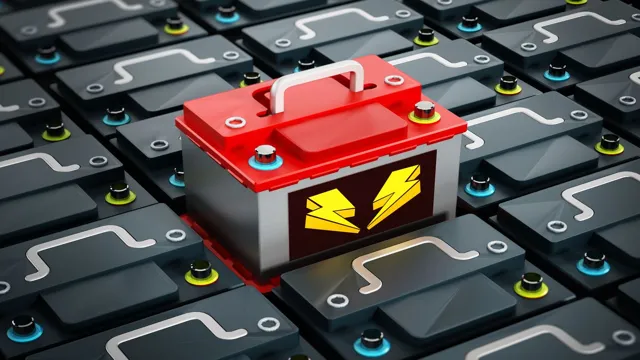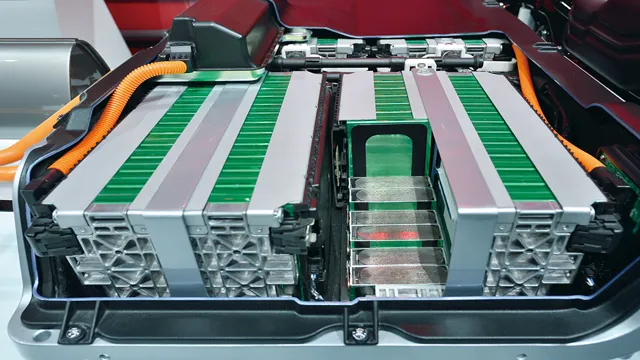Charging Your Electric Car Made Easy with GCFI: A Comprehensive Guide
As electric cars become increasingly popular, charging them at home has become a common practice. However, it is crucial to ensure that the electrical systems used to charge the car are safe and reliable. One way to do this is by using a ground fault circuit interrupter (GFCI) outlet.
GFCI outlets are designed to protect against electrical shock by quickly shutting off the power when an imbalance is detected. This added level of safety can give electric car owners peace of mind when charging their vehicles. But what exactly is a GFCI outlet, and how does it work? In this blog post, we’ll explore the basics of GFCI outlets and why they are essential for charging your electric car.
What is GFCI?
GFCI, or Ground Fault Circuit Interrupter, is an essential device that protects you from electric shock in your home. It works by monitoring the electrical current flowing through a circuit and quickly shutting off the power if it detects a fault. This is especially important when it comes to charging your battery electric car.
The charging process can cause electrical imbalances, and if those imbalances are not addressed, they could result in dangerous electrical shocks. A GFCI outlet or circuit breaker can prevent these situations from occurring by quickly shutting off the power when necessary. So, before you plug in your electric car to charge, make sure you have a GFCI outlet or circuit breaker installed for your safety.
Explaining Ground Fault Circuit Interrupter Outlets
Ground Fault Circuit Interrupter GFCI stands for Ground Fault Circuit Interrupter. It is an electrical device designed to prevent electric shock by shutting off power when it detects current leakage. The GFCI outlet is easily recognizable by its two buttons labeled “test” and “reset”, which are located between the two power sockets of the outlet.
When working properly, the GFCI can detect even small amounts of electric current on the ground wire and can shut off power to the circuit in as little as one-fortieth of a second. The GFCI is a very important safety feature, especially in areas where water is present, such as in bathrooms, kitchens, garages, and outdoor areas. It can save lives by preventing electric shocks and electrocution.
Make sure to regularly test your GFCI outlets and replace them if they are not functioning properly.
Safety First
When charging the battery on your electric car, safety should be your top priority. One essential safety feature to have is a ground fault circuit interrupter (GFCI) outlet. GFCI outlets protect against electric shocks by cutting off power to the outlet if it detects a change in current flow.
This is especially important when charging your electric car because the charger pulls a large amount of electricity for an extended period. It is also essential to use the correct charging cable and ensure that it is fully intact and free of any damage. Using a damaged cable could result in a short circuit or fire.
Another safety precaution is to never leave your car charging unattended for an extended period. It’s best to monitor the charging process and unplug the charger once it has finished. By taking these safety measures, you can ensure that you and your electric vehicle are safe while charging.
Remember, charging your electric vehicle safely means charging with peace of mind.
Why GFCI Outlets are Safe for Charging Your Electric Car
When it comes to charging your electric car, safety should always be a top priority. One of the safest options available is to use a GFCI (ground fault circuit interrupter) outlet. But what exactly makes these outlets so safe? Well, the key feature of a GFCI outlet is its ability to quickly sense any electrical current that is flowing where it shouldn’t be.
If this happens, the GFCI outlet will immediately shut off the current to prevent electric shocks or fires. This is especially important when it comes to electric car charging, as the high voltage needed for charging can present a serious hazard if not properly managed. So, if you want peace of mind while charging your electric car, consider using a GFCI outlet.
How to Ensure Safe Charging with GFCI Outlets
If you’re someone who has struggled with charging your devices safely, then you’ll be pleased to know that GFCI outlets can help put your mind at ease. GFCI (Ground Fault Circuit Interrupter) outlets are designed to protect you from electrical shock by constantly monitoring the electrical current and shutting off the power supply if there is a sudden increase, or ‘fault’, in the current. This can prove invaluable when charging electrical devices as it ensures that any unexpected electrical surges are quickly dealt with.
Plus, using GFCI outlets means that you don’t have to worry about the dangers of overloading or overheating, as they are also designed to prevent these issues too. So if you want to ensure safe charging for all of your devices, make sure you’re investing in GFCI outlets.
Charging Your Electric Car at Home
If you’re considering buying a battery electric car, one of the first things you’ll need to think about is how you’re going to charge it. Fortunately, charging your electric car at home is easy and convenient. Most battery electric cars come with a charging cable that you can plug into a standard GFCI outlet in your garage or driveway.
However, you may want to consider installing a dedicated charging station for faster charging times. It’s important to make sure your electrical system can support the added load of charging an electric car, so it’s a good idea to have an electrician inspect your home’s electrical system before you start charging your car. A fully charged battery usually takes several hours, depending on the size of the battery and the charging rate.
With a little planning, you’ll be able to keep your car charged up and ready to go whenever you need it.
Step-by-Step Guide to Charging Your Electric Car with GFCI Outlets
Electric car charging with GFCI outlets So, you’ve finally decided to make the switch to an electric car? Congratulations! One of the perks of going electric is being able to charge your car right in the comfort of your own home. To do this, you’ll need to make sure you have a dedicated circuit with GFCI outlets installed in your garage or driveway. Don’t worry if you’re not sure what that means; we’ve got you covered.
GFCI outlets, or Ground Fault Circuit Interrupter outlets, are specially designed to protect against electrical shock by quickly shutting off power if they detect a leak to ground. This is an important safety feature to have when charging your electric car, especially in wet or damp environments. The next step is to connect your car’s charging cable to the GFCI outlet, ensuring that it’s securely fastened.
Then, turn on the power to the outlet and let your car charge overnight. By morning, you should have a fully charged electric car ready to go. Just remember to unplug the charging cable before driving away!
Choosing the Best GFCI Outlet for Your Car Charger
Electric Car Charger, GFCI Outlet Choosing the best GFCI outlet for your electric car charger is an important decision when it comes to charging your car at home. Electric cars are becoming more and more popular due to their sustainability and environmental benefits. However, they require charging at regular intervals, making it necessary to have a reliable charging station at home.
A GFCI outlet offers increased safety by preventing the risk of electrocution or electrical fire while charging your electric car. There are various GFCI outlets available, and choosing the appropriate one for your car’s charger is crucial. Consider factors such as the outlet’s amperage, weather resistance, and location before making a final decision.
With the right GFCI outlet, you can charge your electric car safely and worry-free.
Charging Your Electric Car On the Go
If you own an electric car, it’s important to know how to charge it on the go. The first thing you need to do is find a charging station. There are many different types of charging stations, so it’s important to know which one is right for your car.
One common type is the GFCI (Ground Fault Circuit Interrupter) outlet. This type of outlet provides extra protection against electrical shock, making it a great choice for charging your battery electric car. Once you’ve found a charging station, simply plug in your car and wait for it to charge.
Depending on the charging station and the size of your car’s battery, this could take anywhere from 30 minutes to several hours. It’s important to keep an eye on your car’s battery level and not let it get too low, as this could cause damage to your battery. With a little planning and preparation, charging your electric car on the go can be a breeze!
Finding GFCI Outlets on the Road
Electric car owners often face the challenge of finding GFCI outlets on the go to charge their vehicles. While many public charging stations are equipped with GFCI outlets, not all of them are. It can be frustrating to arrive at a charging station only to discover that it doesn’t have the necessary outlet.
However, electric car owners can take steps to ensure they find the right charging stations. One helpful resource is PlugShare, an app that shows users where charging stations are located and what types of outlets they have. This app can save a lot of time and energy for electric car owners.
Additionally, it’s a good idea to call ahead to verify that the charging station you plan to use has the type of outlet you need. With a little bit of planning and the right tools, electric car owners can keep their vehicles charged even on the go.
Tips for Safe and Efficient Charging While Traveling
Traveling in an electric car can be an exciting adventure, but it does require some planning and preparation. One of the most important considerations is how to charge your vehicle on the go. The good news is that there are now more options than ever for charging stations, especially along popular travel routes.
However, it’s crucial to plan ahead and ensure that you have a clear understanding of where and when you will need to charge. When choosing a charging station, make sure that it is compatible with your vehicle and that you have the necessary charging cables. Additionally, be mindful of the charging time, as this can vary depending on the station and the level of charging required.
To make the most of your charging time, consider planning activities or rest stops that will coincide with the charging period. By taking these steps, you can enjoy a safe and efficient journey in your electric car, without worrying about running out of power.
Conclusion
In conclusion, the charging of a battery electric car with a GCFI (Ground Fault Circuit Interrupter) is the ultimate protection against any ground faults or electric surges that could potentially harm both the car and the driver. It’s like wearing a seatbelt while driving, ensuring that you arrive at your destination safely and smoothly. Just as a GCFI is important in a car charger, a witty and clever conclusion is important in a piece of writing to leave a lasting impression on the reader.
And just like an electric car, let’s switch gears and charge forward in pursuit of a brighter, more sustainable future!”
FAQs
How often do I need to charge the battery in my electric car?
It is recommended to charge your electric car’s battery after every use, or at least once a week if not in use.
Can I use a regular GFCI outlet to charge my electric car?
It is recommended to use a dedicated Level 2 charger with a GFCI breaker to ensure safe and fast charging of your electric car.
What is a GFCI breaker and why is it important for electric car charging?
A GFCI (Ground Fault Circuit Interrupter) breaker is an electrical safety device that can prevent electrocution and electrical fires. It is important to use a GFCI breaker for electric car charging to ensure safety and prevent any electrical hazards.
How long does it take to fully charge an electric car battery?
The charging time of an electric car battery depends on various factors such as the battery capacity, type of charging station, and the state of charge. Generally, it can take anywhere from a few hours to overnight for a full charge.







